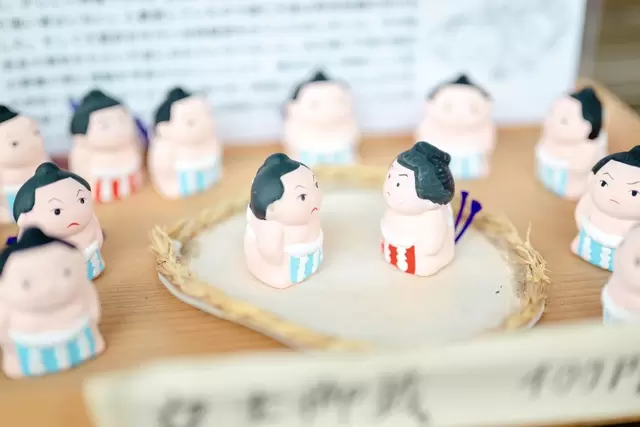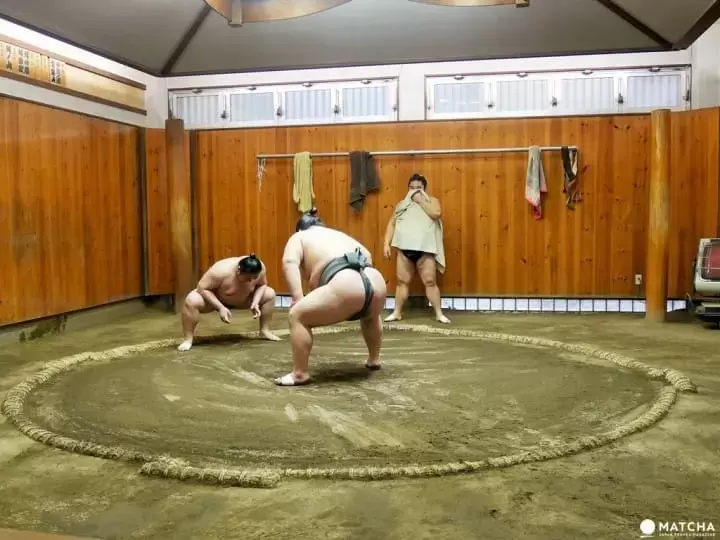Sumo - Japanese Encyclopedia

Welcome to MATCHA's Japanese Encyclopedia, where we explain key words and concepts from Japan. This time, we introduce Japan's historic national sport, Sumo.
Sumo is a competition in which two rikishi (sumo wrestlers) wearing mawashi (wrestling belts) come together to fight in a dohyo (sumo ring) measuring 4.55m in diameter. It was first established as a organized competition around the seventeenth century. Nowadays, it's practiced worldwide, and there are many non-Japanese rikishi, too!
The Origins of Sumo

The origins of sumo date back to ancient times. It first emerged around 5 BC to 3 BC,sswhen it was used as an agricultural ritual to pray for rice cultivation. After that, it became a national event used to predict the success or failure of a harvest, and then a ceremony held at the imperial court. Eventually, it developed into a refined art, and became popular as a form of combat sport.
However, despite sumo's modern sports status, some customs from its time as a sacred ritual remain. For example, the offering of sake, rice, and salt to welcome the Gods of sumo on the first day of a competition, and then sending them off again on the final day with senshuraku, the concluding festivities.
Through its spiritual beginnings and historical development, sumo has become deeply rooted in the lives and hearts of the Japanese people as the national sport.
Sumo in Everyday Life
Nowadays, most fans are of the older generation and many younger people don't know much about the sport, but there are some middle schools that have elective courses on sumo.
There is also a sumo-related Shinto ritual which takes place all over the country. Called nakizumo, literally "crying sumo", it's a competition in which two babies are held by sumo wrestlers, and the first to wail wins. It might not sound like it, but this is considered a prayer for the healthy upbringing of children!

photo by PIXTA
Originally sumo-specific words can also be heard being used in everyday conversation. For example, the aforementioned senshuraku can be used to mean the last day of a program, and yokozuna, the word for the highest rank in sumo, can be used to mean "the biggest" or "the strongest".
It's even infiltrated Japanese food. Chankonabe, a hearty stew of chicken dumplings and vegetables, was originally part of a weight-gain diet for rikishi, but is now popular with the general public.
Want to Watch a Sumo Match?

Want to see the great national sport for yourself? There are a few ways you can go about it. You can watch a match at a honbasho, an official professional tournament, or a hanazumo, a special touring tournament. Alternatively, you can go to a sumo heya, the place where rikishi train, to watch asageiko, the early morning practice sessions.
There's no better way to realize that you're actually in Japan than by watching these larger-than-life legends battle it out!
This is the official account of MATCHA's editorial department. Our articles feature useful travel information for visitors to Japan, from how-to guides to recommended places to visit.































![[2026] Top 5 Strawberry Picking Spots in Tokushima, Naruto| Farms and Access Guide for January to May](https://resources.matcha-jp.com/resize/720x2000/2025/03/06-227165.webp)
![[Yamanashi/ Hokuto City] 4 Hot New Spots Opening in 2026](https://resources.matcha-jp.com/resize/720x2000/2025/12/12-252747.webp)


